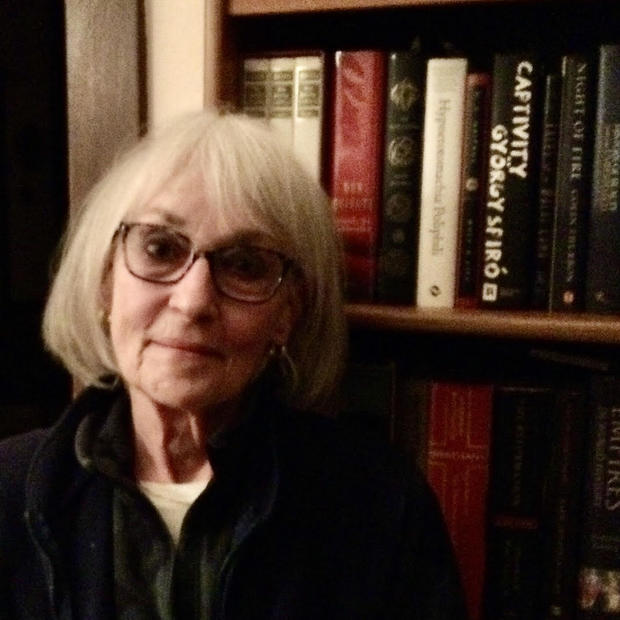Although ending homelessness may sound impossible, especially in dark economic times, 10-year plans to do just that are plugging bravely along. Last week, the Washington State Coalition for the Homeless hosted a "Ten-Year Plan Forum for Western Washington," where people implementing various plans on this side of our state checked in to compare notes.
It’s a critical year for the Committee to End Homelessness in King County. When CEH soon embarks on Year Five of its Ten-Year Plan to End Homelessness in King County, two of its champions, former County Executive Ron Sims and outgoing Seattle Mayor Greg Nickels, will have departed from their local leadership positions. And here as well as nationally, efforts to reduce the numbers of homeless people have been impeded by housing foreclosures, increasing unemployment, stressed social services and nonprofits, and mammoth diversions of federal dollars to bank bailouts and wars. So for the first time since 2000, when the National Alliance to End Homelessness began inspiring communities with research-driven approaches to address the issue, homelessness is on the rise instead of declining. As Tedd Kelleher, of Washington State’s Commerce Department told me at the Oct. 19 forum, “The failures of our other systems — mental health, employment, schools, jails without discharge plans, stressed parents who cut their kids loose at 18 without support — these failures are all ending up in the ‘homeless’ basket.”
It took 20 years for the strategies that led to improvement during the past nine years to develop. As the Urban Institute has pointed out, the epidemic of homelessness between 1980 and 2000 was at first thought to be the temporary result of an economic recession combined with the closures of state hospitals for mental illness and a surge in crack addiction. It was believed that homelessness would subside when the economy recovered and people needing treatment for mental illness and addictions received it. So housing advocates focused on creating short-term shelters and transitional housing.
These attempts to manage the problem failed, the Urban Institute analysis goes on to say, and homelessness only increased. There was a widespread notion that people should be “housing-ready” — employed or in recovery from chronic illness or addiction — before being provided with homes, because these problems were supposedly what had left them without a roof over their heads. Yet how could individuals without housing hold down jobs, let alone keep a degree of balance in the face of chronic mental illness or problems with addiction? Indeed, new research in 1998 and 2002 showed “housing first” — providing people with permanent housing so that they can build stable lives — to be more effective than the housing readiness approach. It is also far cheaper than depending on costly emergency services to rescue the many individuals who fall into crisis between temporary housing stays. Finally, early in this decade the focus shifted from managing homelessness to ending it by helping people find or return to permanent homes. By then, however, critical shortages in low-income and affordable housing had seriously compounded the challenge.
“Ending homelessness doesn’t mean nobody ever becomes homeless,” Bill Block, project director for the Committee to End Homelessness in King County, told me after the forum. “It means establishing two essential capabilities: prevention and rapid-return.” Steps to prevent homelessness should kick in when, for example, a family with few resources needs rental assistance because they face eviction due to a parent’s sudden unemployment. And people who lose their homes should be helped toward a rapid return into housing.
Homelessness in Seattle is often contrasted with homelessness in Edinburgh, Scotland, statistically a mirror of our city in many respects. A recent One Night Count found four people sleeping on Edinburgh’s streets or under bridges, compared with Seattle’s count of 8,349 last January. Block pursued the comparison: “In Edinburgh, 4,000 residents verge on homelessness or become homeless each year. The difference is that the city steps in to prevent homelessness or to enable a resident’s rapid return into housing.” He added, “Our nation is experiencing the massive systemic failure of what we like to think of as a First World society. But most First World societies ensure that their vulnerable populations have housing and health care. Do we really want to be a First World society?”
King County’s Ten-Year-Plan is making progress. Through a severe recession of increasing severity, Seattle’s homeless numbers aren’t rising at commensurate rates, Block said, partly because projects such as 1811 Eastlake have successfully housed chronically homeless disabled people. Nearly 4,000 units of capital housing and rental subsidies are in place or in the pipeline, achieving 41 percent of CEH’s 10-year goal. Funding from the Bill and Melinda Gates Foundation is projected to help address family homelessness in systematic, research-based ways. Federal stimulus funds will offset some of the cuts in the State Housing Trust Fund. Perhaps most important of all, general public interest in ending homelessness remains high.
Still, with so many problems facing our city and region, why should we focus so much interest on homelessness? Stephen V. Sundborg, president of Seattle University and CEH governing board member, once replied to this question that homelessness “is a bellwether for our society,” indicating whether our systems of education, employment, justice, and health are moving in the right direction. Block cultivates his optimism, but he said he is fully aware that public interest could “shift on a dime” to other concerns.


